Best of the preserved ruins
Tuesday, May 24, 2011
 Kusadasi, Turkish Aegean Coast, Turkey
Kusadasi, Turkish Aegean Coast, Turkey
Today we head for Kusadasi via the ancient cities of Aphrodisias and Ephesus.
Founded in the 5th century BC Aphrodisias was dedicated to the goddess of love – Aphrodite. It was the centre of the arts and in particular sculpture. The ruins are in pretty good shape with a 3km long wall still surrounding the city and the Temple of Aphrodite, which was at one time converted to a Christian Basilica, in relatively good condition for its age. There are numerous other buildings such as the Tetrapylon, a 2nd century gateway with 4 sets of 4 Corinthian columns, the Theatre of Aphrodisias later used for gladiator combat, the stadium which seated 40,000 etc etc.
One of the annoyances with visiting some of these sites is the long grass, which they are continually having to cut. It is a good hiding ground for snakes. Bruce had to take evasive action when he was startled by a Black snake which shot across his path and made him leap about a meter high. Although non poisonous there are also vipers at some sites.
Next stop was the Ephesus Museum. Although we had been to Ephesus in August 2009 on the Aegean cruise we had not visited the museum. It was apparently more important to try to sell us carpets and jewellry. Prior to 1923 artifacts and art dug up in Ephesus were sent to museums in Britain and Vienna. The new Turkish Republic stopped this practice and this museum was established to house artifacts retrieved after 1923. The most stunning of the artifacts was probaby the statue of the goddess Artemis. There were many other areas of interest however – gladiator section, section on funeral relics and more.
Following the museum we went to the city of Ephesus, the ancient Greek city which later became a Roman city. It is best preserved classical city of the Eastern Mediterranean. The city is most known for the Temple of Artemis (550 BC), one of the seven wonders of the ancient world. The library is also one of the better preserved buildings and there is also has a large gladiator graveyard. The city's importance as a commercial center declined as the harbour began to silt up.
This being our first stop near a large body of water (the Mediterranean Sea) we went out for a lovely fish dinner. We will discuss Turkish food in another blog.
Other Entries
-
1Let's Go
May 1212 days prior Auckland, New Zealandphoto_camera0videocam 0comment 0
Auckland, New Zealandphoto_camera0videocam 0comment 0 -
2Catching up with Good Friends
May 159 days prior Singapore, Singaporephoto_camera8videocam 0comment 4
Singapore, Singaporephoto_camera8videocam 0comment 4 -
3East meets West
May 168 days prior Istanbul, Turkeyphoto_camera8videocam 0comment 3
Istanbul, Turkeyphoto_camera8videocam 0comment 3 -
4Tour Begins
May 177 days prior Istanbul, Turkeyphoto_camera4videocam 0comment 3
Istanbul, Turkeyphoto_camera4videocam 0comment 3 -
5UNESCO World Heritage Area
May 186 days prior Safranbolu, Turkeyphoto_camera8videocam 0comment 2
Safranbolu, Turkeyphoto_camera8videocam 0comment 2 -
6Turkish National Youth Day
May 195 days prior Ankara, Turkeyphoto_camera4videocam 0comment 3
Ankara, Turkeyphoto_camera4videocam 0comment 3 -
7Whirling Dervishes
May 204 days prior Goreme, Turkeyphoto_camera4videocam 0comment 1
Goreme, Turkeyphoto_camera4videocam 0comment 1 -
8Up Up and Away
May 213 days prior Goreme, Turkeyphoto_camera8videocam 0comment 8
Goreme, Turkeyphoto_camera8videocam 0comment 8 -
9Underground City
May 222 days prior Konya, Turkeyphoto_camera6videocam 0comment 0
Konya, Turkeyphoto_camera6videocam 0comment 0 -
10Pink and White Terraces
May 231 day prior Pamukkale, Turkeyphoto_camera6videocam 0comment 0
Pamukkale, Turkeyphoto_camera6videocam 0comment 0 -
11Best of the preserved ruins
May 24 Kusadasi, Turkeyphoto_camera6videocam 0comment 1
Kusadasi, Turkeyphoto_camera6videocam 0comment 1 -
12Bath time
May 251 day later Kusadasi, Turkeyphoto_camera6videocam 0comment 2
Kusadasi, Turkeyphoto_camera6videocam 0comment 2 -
13Ancient Cities
May 262 days later Assos, Turkeyphoto_camera4videocam 0comment 1
Assos, Turkeyphoto_camera4videocam 0comment 1 -
14Departure from Tour Group
May 273 days later Canakkale, Turkeyphoto_camera6videocam 0comment 0
Canakkale, Turkeyphoto_camera6videocam 0comment 0 -
15Pilgrimmage
May 284 days later Gallipoli, Turkeyphoto_camera6videocam 0comment 1
Gallipoli, Turkeyphoto_camera6videocam 0comment 1 -
16Free day back in Istanbul
May 295 days later Istanbul, Turkeyphoto_camera8videocam 0comment 0
Istanbul, Turkeyphoto_camera8videocam 0comment 0 -
17Still in Istanbul
May 306 days later Istanbul, Turkeyphoto_camera10videocam 0comment 0
Istanbul, Turkeyphoto_camera10videocam 0comment 0 -
18Sadly our last full day in Turkey
May 317 days later Istanbul, Turkeyphoto_camera6videocam 0comment 0
Istanbul, Turkeyphoto_camera6videocam 0comment 0 -
19Goodbye Turkey, Hello Poland
Jun 018 days later Warsaw, Polandphoto_camera8videocam 0comment 2
Warsaw, Polandphoto_camera8videocam 0comment 2 -
20From Chopin to Wedding Cakes
Jun 0310 days later Warsaw, Polandphoto_camera6videocam 0comment 1
Warsaw, Polandphoto_camera6videocam 0comment 1 -
21Looooooooong Driving Day
Jun 0411 days later Vilnius, Lithuaniaphoto_camera4videocam 0comment 2
Vilnius, Lithuaniaphoto_camera4videocam 0comment 2 -
22Day did not go to plan
Jun 0512 days later Vilnius, Lithuaniaphoto_camera6videocam 0comment 0
Vilnius, Lithuaniaphoto_camera6videocam 0comment 0 -
23Art Deco City of the Baltics
Jun 0613 days later Riga, Latviaphoto_camera8videocam 0comment 3
Riga, Latviaphoto_camera8videocam 0comment 3 -
24Where are the hills?
Jun 0714 days later Tallinn, Estoniaphoto_camera8videocam 0comment 1
Tallinn, Estoniaphoto_camera8videocam 0comment 1 -
25The Singing Revolution
Jun 0815 days later Tallinn, Estoniaphoto_camera10videocam 0comment 0
Tallinn, Estoniaphoto_camera10videocam 0comment 0 -
26Boreder Crossing - pun intended
Jun 0916 days later St. Petersburg, Russian Federationphoto_camera12videocam 0comment 0
St. Petersburg, Russian Federationphoto_camera12videocam 0comment 0 -
27Another Wonderful Day
Jun 1017 days later St. Petersburg, Russian Federationphoto_camera10videocam 0comment 3
St. Petersburg, Russian Federationphoto_camera10videocam 0comment 3 -
28Splendor and Oppulence
Jun 1118 days later St. Petersburg, Russian Federationphoto_camera10videocam 0comment 2
St. Petersburg, Russian Federationphoto_camera10videocam 0comment 2 -
29Moscow food needs work
Jun 1219 days later Moscow, Russian Federationphoto_camera8videocam 0comment 3
Moscow, Russian Federationphoto_camera8videocam 0comment 3

 Kusadasi, Turkish Aegean Coast, Turkey
Kusadasi, Turkish Aegean Coast, Turkey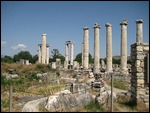
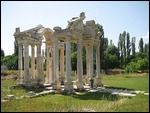
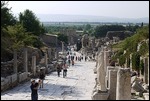
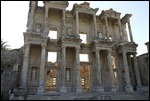
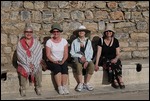








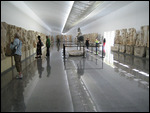
2025-05-23